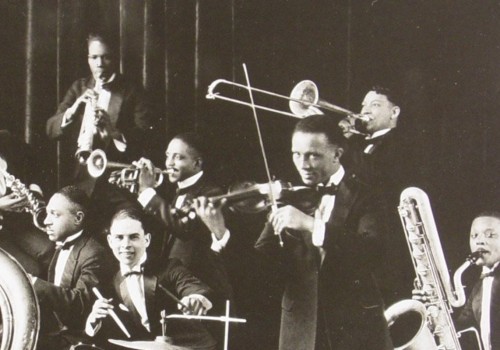Jazz is a genre of music that has captivated audiences for over a century. Its origins can be traced back to the early 20th century in New Orleans, a port city with a diverse population of African, French, Caribbean, Italian, German, Mexican, and American Indian descent. This melting pot of cultures created a unique musical landscape that allowed jazz to develop from a mix of ragtime, marches, blues and other types of music. The evolution of jazz was led by a series of brilliant musicians such as Louis Armstrong, Duke Ellington, Charlie Parker and Miles Davis.
These artists helped shape the genre into the many styles we know today, including traditional jazz, swing, bebop, fresh jazz and jazz-rock. Jazz has since spread from the United States to many parts of the world and is now one of the largest U. S. exports to the world.
The exact origins of jazz are difficult to pinpoint as it was created over time through a meeting and mix of many cultures. African American musical traditions blended with others to form the basis for jazz. Slaves were even allowed to own drums in New Orleans, which helped shape the sound of jazz. In the 1960s and 1970s, many jazz musicians had only a basic understanding of Cuban and Brazilian music.
This led to the emergence of Afro-Latin jazz, which incorporates rhythms that have a direct analogue in Africa or exhibit an African rhythmic influence beyond what is normally heard in other types of jazz. In 1919, the Original Dixieland Jazz Band was performing in England and Bechet in France; their music was warmly welcomed. The jazz era culminated with the historic Benny Goodman concert of 1938 at Carnegie Hall, which brought together musicians of various ethnicities to play jazz inside this sacred hall. The syncopations of jazz were not entirely new; they had been the central attraction of one of its precursors, ragtime, and could be heard even before in minstrel music and in the work of the Creole composer Louis Moreau Gottschalk (Bamboula, subtitled Danse des Nègres, 1844-1845, and Ojos Criollos, 1859, among others). Brazilian jazz is derived from samba with influences from jazz and other styles of classical and popular music. Following the work of drummer Han Bennink and pianist Misha Mengelberg, musicians began to explore by improvising collectively until they found a form (melody, rhythm, a famous song).
Jazz critic Kevin Whitehead documented the free jazz scene in Amsterdam and some of its main exponents. Jazz has been in constant evolution since its inception in the early 20th century. In 1917, the Original Dixieland Jazz Band recorded the first commercial jazz recording while playing in New York City. Since only a limited number of American jazz records were released in Europe, European jazz has many of its roots in American artists such as James Reese Europe, Paul Whiteman and Lonnie Johnson. The jazz-rock fusion appeared in the late 60s and early 70s combining jazz improvisation with the rhythms of rock music. Modal jazz is a development that began in the late 1950s and that takes fashion or musical scale as the basis for musical structure and improvisation.Acid jazz often contains several types of electronic composition but it is just as likely to be played live by musicians who often show their interpretation of jazz as part of their performance.



